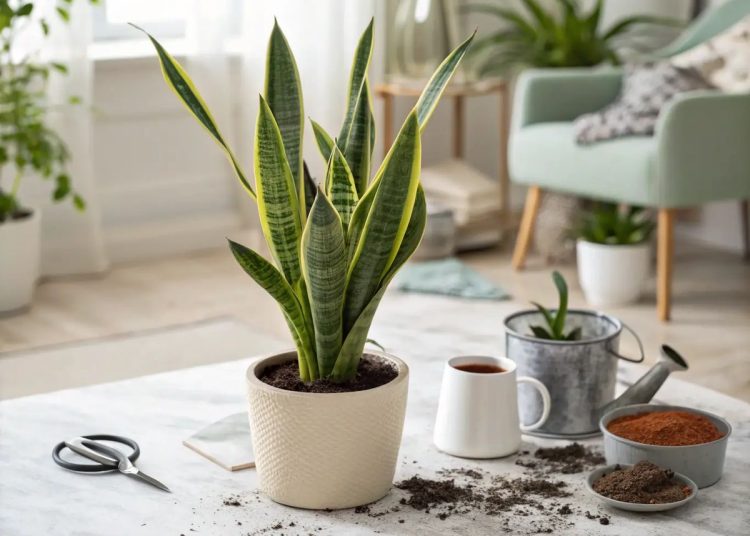Snake plants (Sansevieria), also known as mother-in-law’s tongue, are one of the most resilient and stylish houseplants you can grow. With their striking upright leaves, minimal care needs, and air-purifying qualities, snake plants are perfect for both beginners and experienced plant lovers.
If you’re wondering how to grow snake plants successfully, this guide will walk you through everything from choosing the right soil to long-term care.
Why Choose a Snake Plant?
- Low maintenance: Can thrive on neglect.
- Air purifier: Known to filter toxins like formaldehyde and benzene.
- Adaptable: Grows well in both low light and bright light.
- Stylish: Adds a modern, architectural touch to any room.
Step-by-Step: How to Grow Snake Plant
1. Choose the Right Soil
Snake plants prefer well-draining soil to prevent root rot. The best mix includes:
- Cactus or succulent soil
- Or a DIY mix: 2 parts potting soil + 1 part sand or perlite
2. Pick the Right Pot
- Use a pot with drainage holes.
- Terracotta pots are ideal because they absorb excess moisture.
3. Planting Your Snake Plant
- Fill the pot halfway with soil.
- Place the snake plant in the center.
- Add more soil, leaving about 1–2 inches from the rim.
- Gently pat down to secure the roots.
4. Light Requirements
- Thrives in indirect bright light but tolerates low light.
- Avoid direct hot sun for long hours—it can scorch the leaves.
5. Watering
- Water every 2–6 weeks, depending on conditions.
- Let the soil dry completely between waterings.
- In winter, reduce watering frequency.
Tip: Overwatering is the most common reason snake plants fail.
6. Temperature & Humidity
- Ideal range: 60–85°F (16–29°C)
- Can tolerate dry air, but avoid cold drafts and frost.
7. Fertilizing
- Feed with a balanced houseplant fertilizer once a month during spring and summer.
- No need to fertilize in fall and winter.
8. Pruning & Maintenance
- Remove yellow or damaged leaves with clean scissors.
- Wipe leaves occasionally to keep them dust-free.
9. Propagation
Snake plants are easy to multiply. Try:
- Leaf cuttings: Place a leaf cutting in soil or water until roots grow.
- Division: Separate root clumps when repotting.
Common Problems
- Yellowing leaves: Overwatering.
- Curling leaves: Pests, low humidity, or too much sun.
- Slow growth: Not enough light or nutrients.
Final Thoughts
Growing a snake plant is rewarding and effortless. With just a little care—choosing the right soil, watering sparingly, and giving it the right light—you’ll enjoy a hardy, beautiful plant that thrives for years.
Snake plants are more than just decor; they’re living air purifiers that bring greenery and freshness into your home with minimal fuss.
















